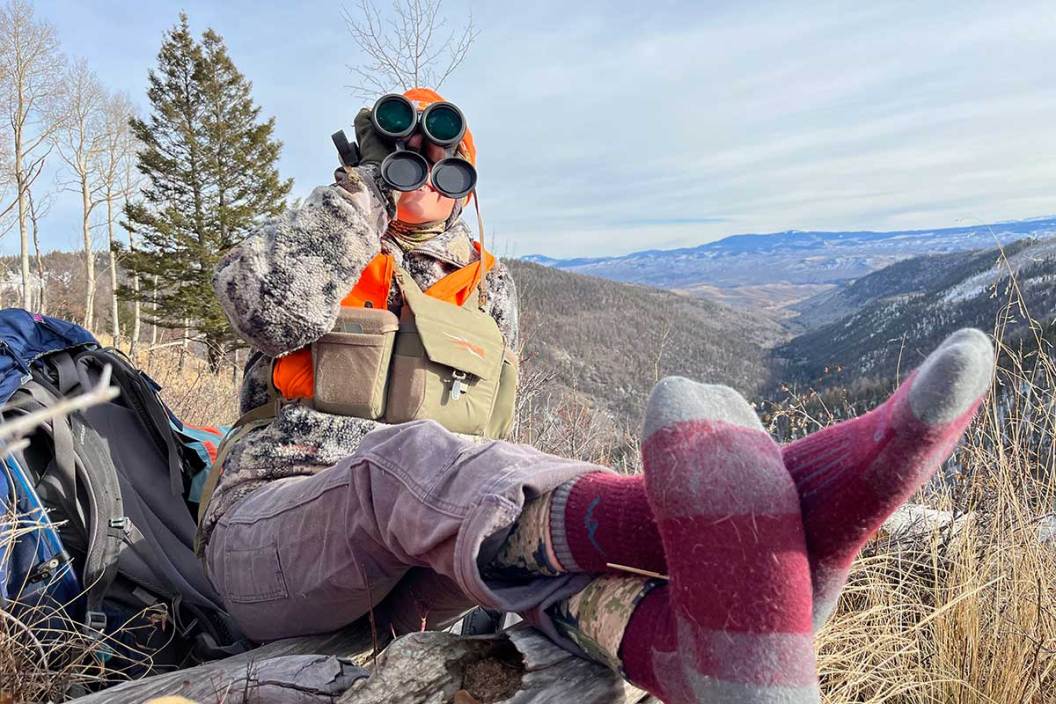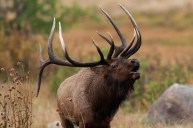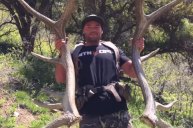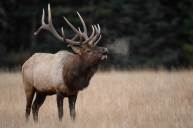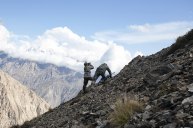There's nothing like seeing a big public-land bull on the other end of your binoculars. Glassing for elk before your hunting season starts isn't just a great way to make a game plan before opening day, but it's also a fantastic way to spend time in beautiful mountain forests in late summer and early fall. And of course, when it comes time to actively get in there and hunt, glassing becomes even more important. For some, especially those new to it, picking a spot to glass for elk can feel overwhelming. There are so many places to look when glassing an entire mountainside. Plus, how can you even see them hiding in dark timber or shadowy hillsides? What if they're avoiding open areas altogether? Here are a few tips for glassing up elk when scouting or actively hunting that will go a long way in supporting your efforts, and making sure you aren't wasting time or energy.
Practice Identifying Elk
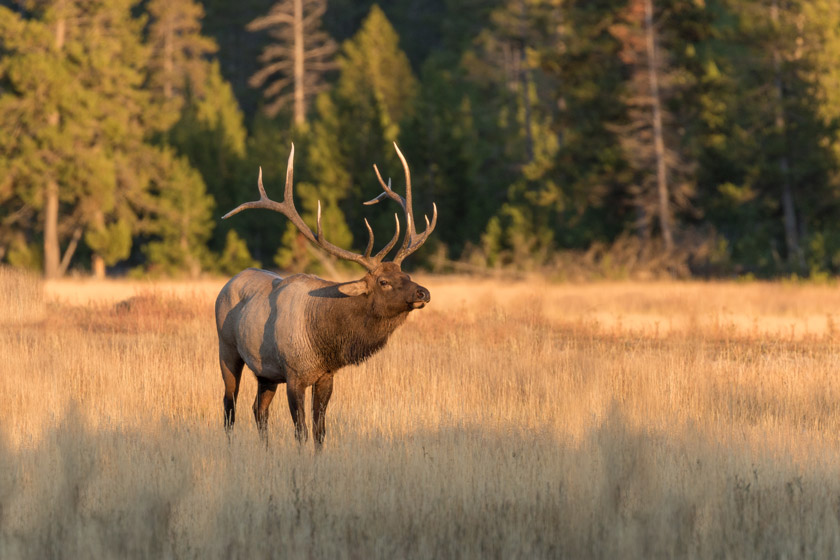
Training your eye to see elk is an under-appreciated aspect of scouting. Sure, it's easy to identify a bull that's feeding out in the open 400 yards away from your glassing spot, but it becomes more difficult to spot a bedded cow elk two miles away in a patch of timber. Practice spotting elk from both short and long distances before your glassing session begins. You can do this any time of year, especially in the summer. I'm lucky enough to live close enough to Rocky Mountain National Park, and using the offseason to practice my binocular use and ID skills is super beneficial. Simply posting up at a good lookout spot and glassing an afternoon away can help your brain learn what elk look like up close and far away.
Thankfully, all elk look pretty darn similar. From far away, bedded elk often look like a small, brown oval with a dark line sticking off one side. If you see many small ovals clumped together, you've likely located a herd of elk bedded down. Other times, all you can see is their light tan rump reflecting in the sun on a sage-covered hillside. Elk can be hard to tell apart from mule deer at long distances. However, mulies have a rather dainty silhouette and appear more fragile than elk. Elk typically have darker, more prominent necks than deer, a feature that can be visible even at long distances. They also have heavier bodies and shorter tails, and elk aren't as gray-colored as mule deer.
Practice glassing up antlers on bull elk, too. Typically, they look like sticks from a ways away; but if they catch the sun, you'll be able to tell them apart from the aspen branch the elk is standing beside. Locating small, broken-up details of an animal through thick foliage will help you spot more elk.
Get in Before Shooting Light, and Stay Until Last Light
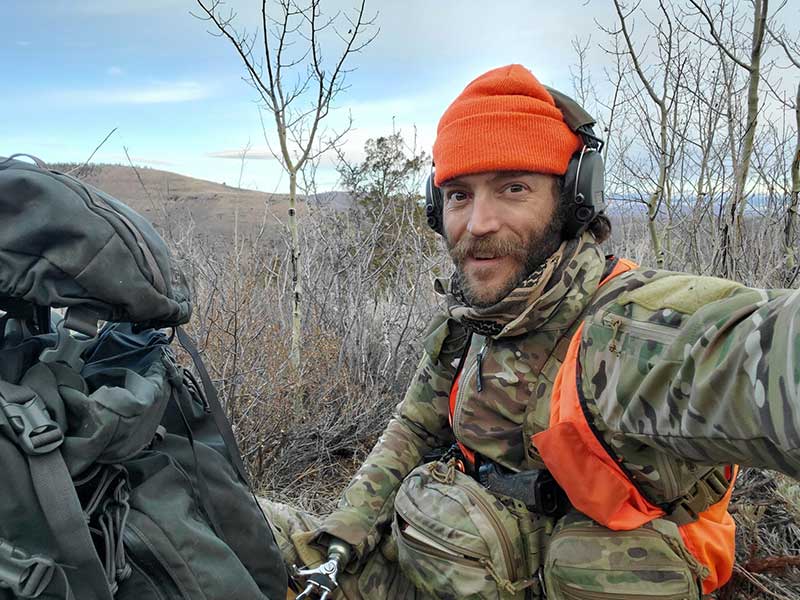
Gabriela Zaldumbide
Elk are most active in open areas at daybreak and last light. Their crepuscular behavior means you'll have to wake up early and stay out late to have the best chances at glassing up elk. Of course, elk exist all day, but it can be much easier to spot them during the early morning and late afternoon when they're out in the open.
Elk herds follow their lead cow into feeding and bedding areas. They are relatively routine-based animals, often bedding and feeding in the same general area until they migrate out. At first and last lights, they usually follow the leader on a string as they head to their next destination. During these times of day, you might see a long line of elk moving across a mountainside or feeding across an open meadow behind their leader. However, they're usually bedded down in dark timber by midmorning. Sometimes, they stay bedded until the evening. Glassing during these times of day can increase your chances of seeing elk.
Prioritize Skylines, Open Areas, and Nearby Areas First
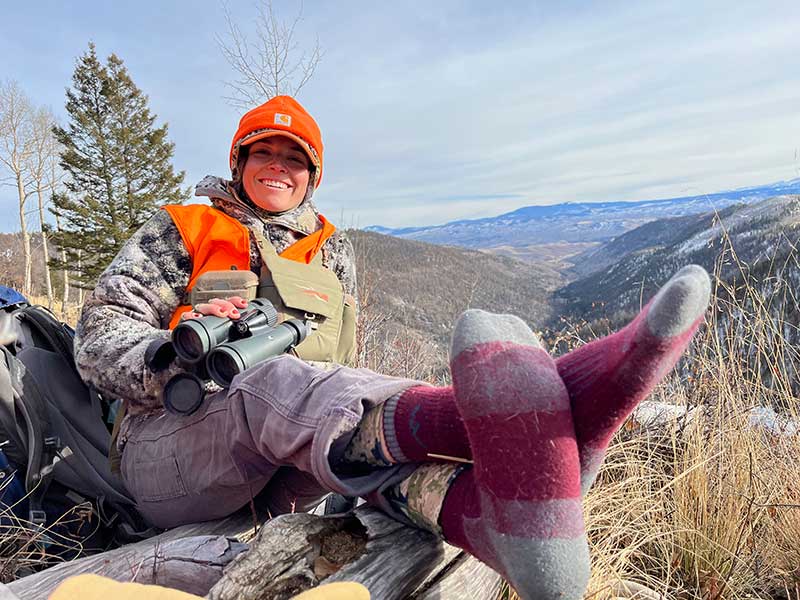
Gabriela Zaldumbide
You can spot elk quickly and efficiently when you look into areas you can easily glass into first. When I glass for elk, I first prioritize skylines, open spaces, and the nearest, easily-reachable areas. Right after I settle into my glassing spot, I scan the skyline first. It's easy to see an elk backlit against the sky. If I don't see anything skylined, then I glass the nearby areas. Scanning openings within a reasonable vicinity is essential when you're glassing during your hunting season. You'll waste time and energy hiking to a bull a mile away when there's another bull 400 yards out that you never saw. After glassing close spots, I look into the more open areas. I focus my time on the avalanche chutes, meadows on saddles, and grassy gaps between the timber, since elk are easier to locate in those places.
I scan dark timber for elk next. Elk prefer living on the top third of the ridge, so I prioritize glassing trees in this area before moving to the lower two-thirds of the hillside. I carefully glass conifer forests, attempting to decipher antlers from branches and bodies from downed logs. Take your time when glassing into the trees.
Once I've scanned all the dark timber, I look at the skyline again. And then nearby areas. And then open areas. And then timber. In addition to glancing into the most prime-looking spots every few minutes (I don't want to miss something because I was too busy following my glassing pattern), I wash, rinse, and repeat this glassing strategy until I find what I'm looking for.
Glassing up elk is tedious and requires patience, but can be incredibly fun when done with the right perspective. I get a kick out of watching animals interact with their native habitat without knowing I'm there. Observing elk behavior isn't just enjoyable as an outdoorsman or woman; it can also help you become a better elk hunter. As long as you stay patient, you'll be an expert at glassing up elk in no time.
